OS X Daily: Enable the Develop Menu in Safari |  |
- Enable the Develop Menu in Safari
- iOS 5.0.1 Beta Resolves Battery Life Issues for iPhone 4S & iOS 5, Public Release Soon
- Enable and Use the ‘locate’ Command in the Mac OS X Terminal
- Official Gmail App for iPhone and iPad Released
| Enable the Develop Menu in Safari Posted: 03 Nov 2011 04:22 AM PDT
The Develop menu of Safari adds a variety of additional features to the web browser, including the inspector and error consoles, javascript debugging tools, the ability to disable various page elements, enable the ‘Do Not Track’ feature, use WebGL acceleration, and it offers a simple way to change the browsers user agent. These features are obviously intended for web developers, but they’re useful beyond that too. Here’s how to enable the hidden Develop menu in Safari:
The Developer menu has been around for quite some time, but in a recent article on how to spoof an OS X 10.8 browser user agent using Safari or curl at the command line, we somehow failed to mention how to enable the menu… oops. Now you know. Note: the Develop menu is different than the Debug menu. |
| iOS 5.0.1 Beta Resolves Battery Life Issues for iPhone 4S & iOS 5, Public Release Soon Posted: 02 Nov 2011 03:40 PM PDT
Apple has acknowledged battery draining issues with iOS 5 and has since released a beta version of iOS 5.0.1 to developers, indicating a public release is due soon. The update aims to fix iOS 5 battery problems without modifications of settings, bring multitasking gestures to iPad 1 without the third party tweak, and resolve several other bugs and issues that shipped with iOS 5. Currently iPhone 4S can disable Location Services like Reminders and Time Zone to improve their battery life, but the official fix from Apple will appear soon and should allow 4S users to re-enable such features. Some battery life issues with the iPhone 4S and iOS 5 were confirmed directly by Apple in a short statement to The Loop, saying:
This was quickly confirmed by developers indirectly, with the release of the iOS 5.0.1 beta update. The primary fixes in the developer build 9A402 are:
The beta release is available for all models of iPad and iPad 2, iPhone 4 CDMA & GSM, iPhone 4S, iPhone 3GS, and iPod touch 3rd and 4th generations. If you are not a developer, try some of these tips to regain battery life until the 5.0.1 update becomes publicly available. |
| Enable and Use the ‘locate’ Command in the Mac OS X Terminal Posted: 02 Nov 2011 10:11 AM PDT
The locate command is very useful if you’re looking to track down every instance of a file, filetype, app, extension, things hidden deep in system folders, or just about anything else that Spotlight can’t manage. It’s extraordinarily useful for troubleshooting and even more mundane tasks like completely uninstalling Mac apps. In order to use locate, you need to build the locate database, which also enables a few other helpful commands including whatis, find, and the manual keyword search ‘man -k’. OS X 10.7 is better at building this for you, but if you don’t have locate enabled yet all that is required is typing this command into the Terminal:
This is told to you directly by OS X the first time you attempt to run locate or any of the commands dependent on the database:
How long it takes to generate the database varies, but the larger your hard disk the longer it’ll be. You can watch the progress indirectly through Activity Monitor, where the “find” process will be running at around 15-30% CPU use until the locate database is generated.
Alternatively you can also run the following command and build the database:
As with many terminal commands, locate accepts wildcards and regular expressions, helping you narrow down advanced searches. For example, you could find every possible file with a .jpg extension by using:
Some jpg files will inevitably have an uppercase extension though, and you can tell locate to ignore case sensitivity with -i:
There are plenty of other options you can work with, refer to ‘man locate’ for more info. |
| Official Gmail App for iPhone and iPad Released Posted: 02 Nov 2011 09:42 AM PDT
Google has released an official native Gmail app for iOS that runs beautifully on the iPhone and iPad. The app is free and has all the features you’d expect in a mail client, including notifications, threaded messages, Gmails priority inbox feature, inbox search, easy photo uploading, and a great split screen view for the iPad. The official feature list:
Download Gmail for iPad or iPhone from the App Store Gmail for iOS is a free download and worth checking out if you’re a heavy Gmail user and wanting an alternative to Apple’s default Mail app. The release of the Gmail app also demonstrates that Apple is easing up on some of the restrictions regarding apps that share functionality that already exist on the iPhone. This could possibly lead to an increase in other native mail clients being accepted into the App Store, such as Sparrow.
|
| You are subscribed to email updates from OS X Daily To stop receiving these emails, you may unsubscribe now. | Email delivery powered by Google |
| Google Inc., 20 West Kinzie, Chicago IL USA 60610 | |



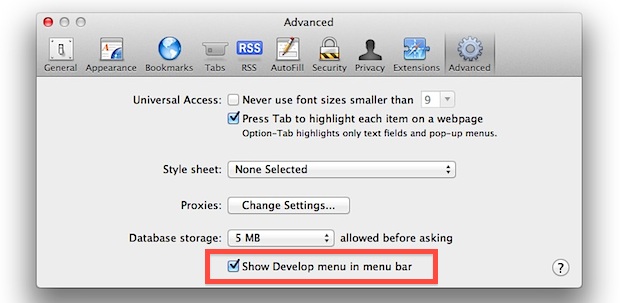
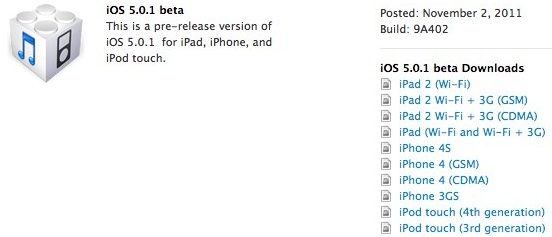
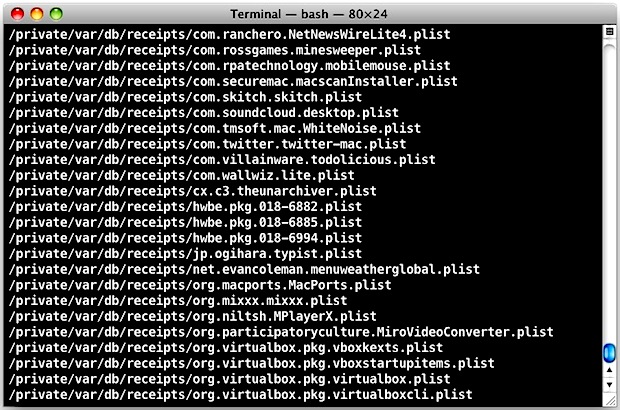

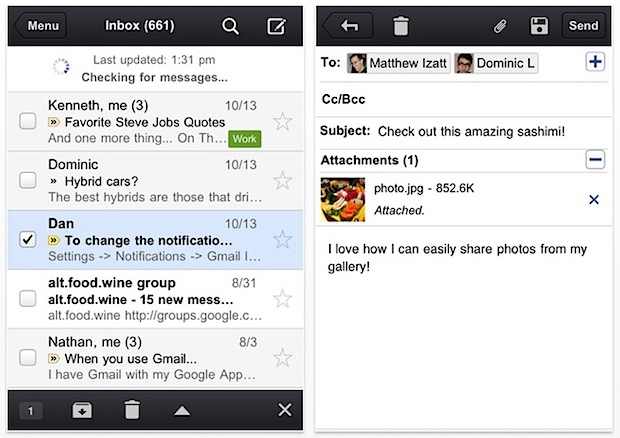
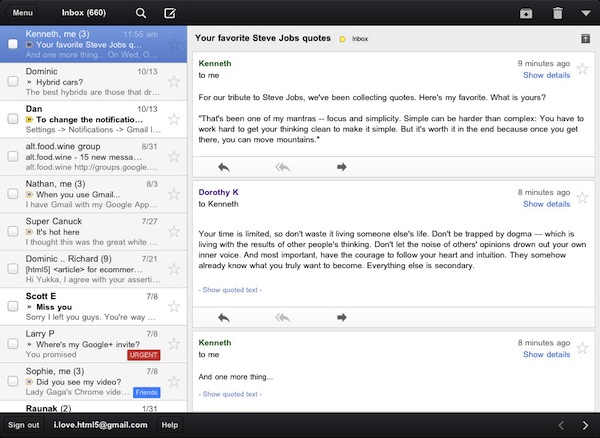

No comments:
Post a Comment